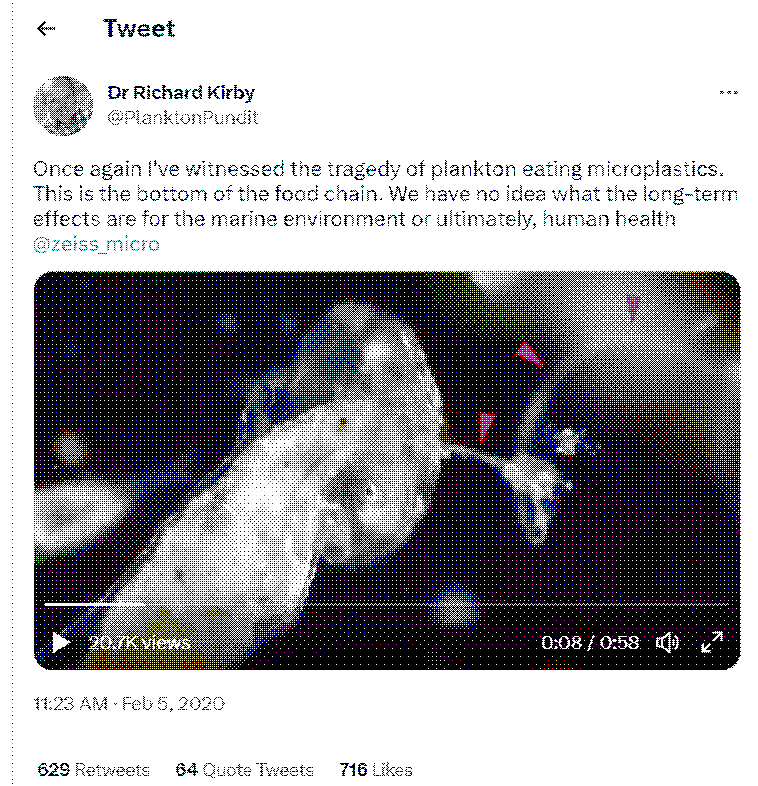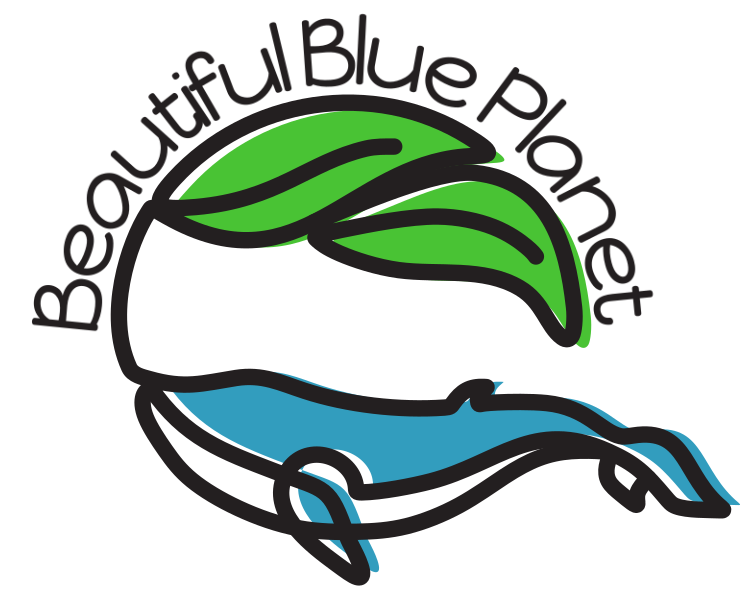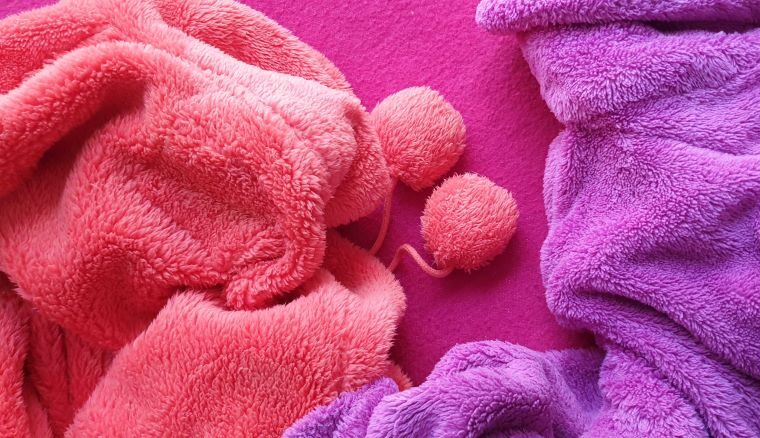We need to stop using synthetic fiber fabric. Just stop.
We’re not shedding them into the environment only by washing them.
It’s much worse than that.
We shed microfibers by simply wearing them.
We shed more microfibers by wearing them than from washing them
A study was done that showed the microfibers are shed at least three times as much by wearing fabrics with synthetic fibers in them than by washing them.
When we put them on and take them off, when we walk and move about in them, we’re rubbing and brushing and breaking fibers that float out into the air. Some will land on the ground. Many fibers become airborne and travel.
Here’s what this means. You wear your soft, cozy fleece jacket or vest and you go out for a walk. Just your normal movements break off pieces of fibers. These fibers drop onto the ground or get picked up by the wind, where they can travel long distances. Ultimately they can get carried to the far corners of the earth, so no place is left untouched.
Either from the ground or the air the shed microfibers get washed with rainwater into waterways, ultimately ending up in freshwater bodies and further on into the ocean.
They never biodegrade
These microfibers are bits of plastic that never biodegrade. They only break into smaller and smaller pieces. And the smaller they get, the easier they get into living organisms. Including us.
We know that we’re already ingesting plastic—it’s in the air, in our water, and in our food. Currently we’re ingesting about a credit card’s worth of plastic each week😖 according to the World Wildlife Fund.
We don’t yet know how that affects our bodies and organs. (It can’t be good.)
But in the late 1990’s scientists noticed microplastics in the lung tissue of lung cancer patients and they expressed concern that plastic fibers could contribute to lung cancer risk.
Microfibers get into all forms of life
They get into birds, into fresh and saltwater fish, they get into the zooplankton that form the most important food source bulk at the bottom of the food chain for all ocean life. They even get into plants!
Remember that microfibers are less than 5mm long and thinner than a strand of silk—you can’t see them.
But we do know that the tiny fibers fill the guts of the zooplankton so that they can’t eat anymore the food they need. Those are the animals that form the base of the ocean’s food chain. If they fail, ocean life will fail.

And with that the oxygen producing phytoplankton—the ones that produce about 80% of the earth’s oxygen—will surely fail.
The worst types of fabrics
The worst synthetic fabrics are the ones with the longest fibers, especially the ones that are exposed, like the fleeces.
And fleeces have become so incredibly popular. Think about Christmas time. In the stores all you can see are fleece blankets, bathrobes, sweaters, jackets, and vests,…fleece everything
Then at home, unless you have leather, our upholsteries are most guaranteed to be synthetic.
Next think of your carpets. They rarely wool anymore. And they’re most likely nice and plush, soft on your feet,…their little fibers break off with the foot traffic they get, and get kicked around in your home, and sent into the air where everyone breathes them in.
The worst may be for our children
I think the worst is for our children. Even if you use all natural fibers in their clothes, their stuffed animals are all made with synthetic fibers. They play on the carpets and crawl on the carpets. I fear they are getting a heavy dose of microfibers in their tiny lungs and in their tiny bodies. Think of all the contact they may have with synthetic fibers, especially fleeces.
Here’s where microfibers that get into the ocean end up
Researchers have found where fibers and microfibers end up.
Once they have floated in the surface waters, they become laden with other particles and some ocean life, drift down deeper into the water column, and slowly make their way down the water column, they settle on or near the ocean floor. Here they make a slow drift in the sea floor currents and ultimately end up in the most important ecosystem biodiversity hotspots in the ocean—places where healthy ecosystem regeneration occurs. (Read about how microfibers travel undersea here.)
This is where all our fibers are ending up. But the synthetic ones aren’t breaking down. It takes years for this process to happen. The implications of it are unknown but scientists agree it can’t be good.
Synthetic fiber manufacturing is not slowing down
Fast fashion (link) has created a huge rise in demand in clothing made with cheap fibers. It has enabled many more people to wear trendy clothing on a low budget. But that has also made fashion pieces so much easier to discard and replace with something newer and trendier.
Currently 48% of all synthetic fibers are made for clothing. And it’s increasing.
“The global synthetic fibers market size was estimated at USD 70.02 billion in 2022 and it is expected to reach around USD 114.54 billion by 2030.”
Precedence Research, Synthetic Fibers research
That’s a doubling of synthetic fiber production, 48% of which is used for clothing, in just the next 7 years!
This is not a single-use plastics problem
This is not a beach plastics problem(But here’s how you can help with that).
It’s a problem that’s invisible to the naked eye…which makes it so much easier to get into all forms of life.
Today scientists estimate that textiles produce 35% of the microplastic pollution in the world’s oceans (in the form of synthetic microfibers), which would make textiles the largest known source of marine microplastic pollution.
Katie Okamoto, New York Times
But that also means it’s easy to not know about it, or to ignore it. But everyone needs to know that it is happening.
We need to work with our conscientiousness here and act responsibly.
Microfibers are a problem each and every one of us contributes to. And it’s been happening since synthetic fibers have been in production.
But now, with fast fashion, and the popularity of fleece fabrics…and with the rapidly increasing production of these damaging fibers and their fabrics….we need to just stop.
We need to stop buying them. We need to let companies know that we don’t want them anymore. And I propose that we stop wearing and using the ones we have. (Tall order, I know.)
We need to just stop using synthetic fibers in our textiles.
Related Reading
What are microfibers? Where do they come from? Why are they a problem?
Buy Less Clothing, Reduce Your Wardrobe’s Microfiber Pollution-Here’s Why
Septic Systems Keep Microfibers Out of the Environment, Right?
Wash Less & Wash Better to Reduce Microfibers and Save Your Clothes

